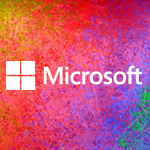 Microsoft, the American multinational corporation headquartered in Redmond, Washington, is a tech titan that develops, manufactures, licenses, supports and sells computer software, consumer electronics and personal computers and services. Since Satya Nadella became the CEO of the company, some surprising things has happened.
Microsoft, the American multinational corporation headquartered in Redmond, Washington, is a tech titan that develops, manufactures, licenses, supports and sells computer software, consumer electronics and personal computers and services. Since Satya Nadella became the CEO of the company, some surprising things has happened.
Microsoft has been praised more than often with its dare bold strategy to conquer the market it is in. But with the ecosystem changing, and the company can't stay loyal to the once promising strategy that made it a giant today.
To keep up with the ever-growing change in landscape, competitor and market demand, Microsoft is making yet another bold move: it's going 'freemium'.
Chris Capossela, Microsoft's Chief Marketing Officer that is in charge of marketing the software giant, revealed Microsoft's freemium plan in full.
A Change in Tradition
Since Microsoft was founded in 1975, the company's revenue primarily come from licensing software like Windows and Office to OEMs and businesses. At the peak of its success, Microsoft is able to dominate the PC market with a margin unreachable to all other competitors.
But mobile is changing the ecosystem where Microsoft used to thrive. With Google, Apple and others eating away its market share, Microsoft needed to change to promise a better future for its entire business.
PCs, despite being irreplaceable, is struggling to compete with the growing mobile market. Google with Android is on par with Apple with iOS in the mobile segment. The two conquer most of what the market demands: Apple successfully developed 'cult' fanboys, and Google with a long list of free services.
Giving away products for free is not Microsoft's thing. And going for Apple with 'premium' product is not a choice either. So the company goes in between. Freemium is what the company sees best.
Capossela explains that the strategy involves four parts:
- Acquire: Getting people to use a product for free.
- Engage: Getting people hooked on the product and leverage other parts of its ecosystem to keep people using the service.
- Enlist: Finding fans to keep the circle going.
- Monetize: Making money out of people who wants subscription versions of the service they're hooked.
It may sound simple, but this strategy is new to Microsoft, and the company hasn't got any experience with it.
Google has thrived and became big by offering free services in return for users' data or ads, but Microsoft's approach assumes people are willing to spend money on apps and services they're addicted to.
A Strategy to Break Addiction
Microsoft is one of the oldest tech titan that survived the dot-com bubble and the mobile shift era. As a company that isn't an internet company, Microsoft's way to go freemium is exactly how it will rival Google's and Apple's ecosystems.
Capossela said that former Microsoft CEO Steve Ballmer has hinted the change during his last months in the company. Caposella used an illustration of all three companies' greatest assets to show where Microsoft is focusing its efforts.
"If you look what Apple advertises on TV, at least in the U.S., it's all iPhone and iPad, and yet you see all the lines that connect their ecosystem," explains Caposella. "So they can focus their marketing dollars on a very small number of things, be very disciplined, but because they've engineered their things to work together one product naturally leads to the next product without any marketing at all. Very efficient marketing to build your marketing into your products."
"Microsoft is taking an Apple approach to product integration."
This technique is efficient, as proven by Apple. The Cupertino-based company has made its product a source of marketing without much effort. Capossela cited Cortana that feeds information into Bing. "If you use Cortana, you're actually becoming a Bing user," explains Capossela. "This is a way I can build Bing into every Windows Phone, into every Windows."
With users depending on Cortana for doing searches, they are automatically breaking up Google's addiction.
But breaking the familiarity of using Google is difficult. Even for the older and more mature Microsoft. But Microsoft's strategy to spread Cortana into apps and other services across Microsoft's product certainly will draw people away from Google.
Microsoft has already used the same strategy for Outlook by integrating it with Skype to make more people become Skype users so Microsoft can sell them minutes or subscriptions.
"We know consumers are choosing an ecosystem more than ever," admits Caposella. He also highlights that this is what Microsoft really wants to improve. "We don't have nearly the connectivity between our products that Apple has engineered, that Google has engineered."
A Long Way to Promising Result
Microsoft has brought more of its services together. Each and every products the company develops and owns, is slowly unified - apps, services and the devices themselves on a single operating system. Microsoft's freemium strategy can be beneficial to the company as long as the company has better interconnectivity between apps and services across its platform.
And as Microsoft continues to focus to target iOS and Android, the company will find each and every opportunity, and use of it to break users' addiction to the already powerful Google's and Apple's ecosystems.